Studies On Residential Power Line Noise - Part 10 - PS Audio P10 AC Regenerator

DarqueKnight
Posts: 6,765
Introduction
In my two channel system, only the source components and line level and phono preamps are connected to an AC regenerator. Those components only represent a 110 watt load. One might assume that there would not be an audible difference between the P5 and the more powerful P10 AC regenerators since the P5 was only being utilized at 14% of capacity. The P10's extra goodness might be considered as wastefully indulgent overkill. What good would more headroom do on top of the already extravagant amount of headroom provided by the P5?
That might have been a valid question if music signals weren't full of transients that require large amounts of power to reproduce cleanly and accurately. The P10 has 20% more continuous power, 25% more peak power and 40% more peak current than the P5. I am well aware of the benefit of extra power headroom for power amplifiers. I was surprised at the difference that the P10's extra headroom made in the performance of my low power source components and preamps.

Figure 1. Time's up...Sonny's home.
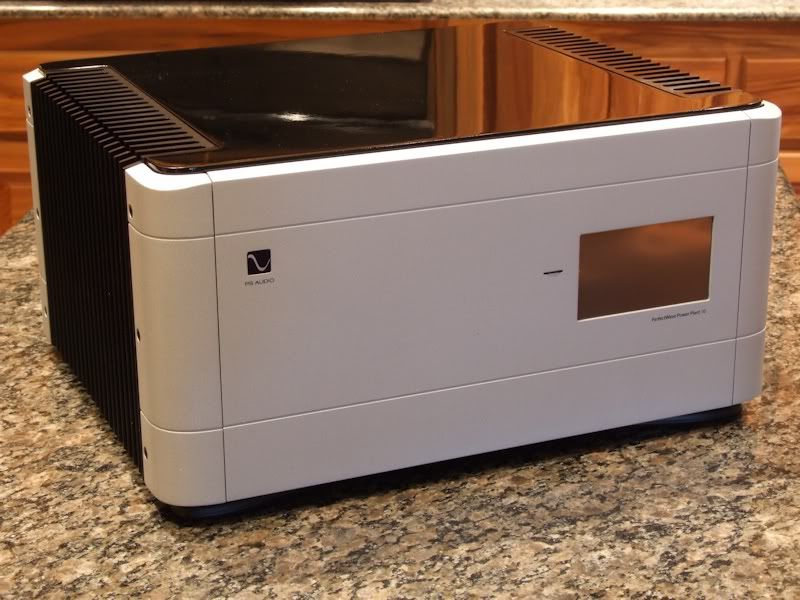
Figure 2. The P10 is a huge hunk of metal like PS Audio's earlier power plants.
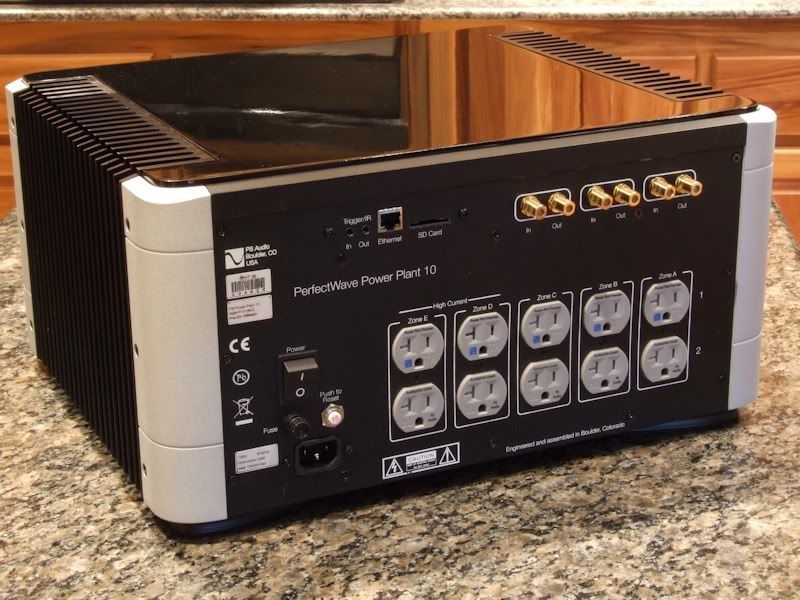
Figure 3. Upgrade Power Port Premier outlets and a changeable fuse! Just two reasons why the P10 makes
Such Good Sound.
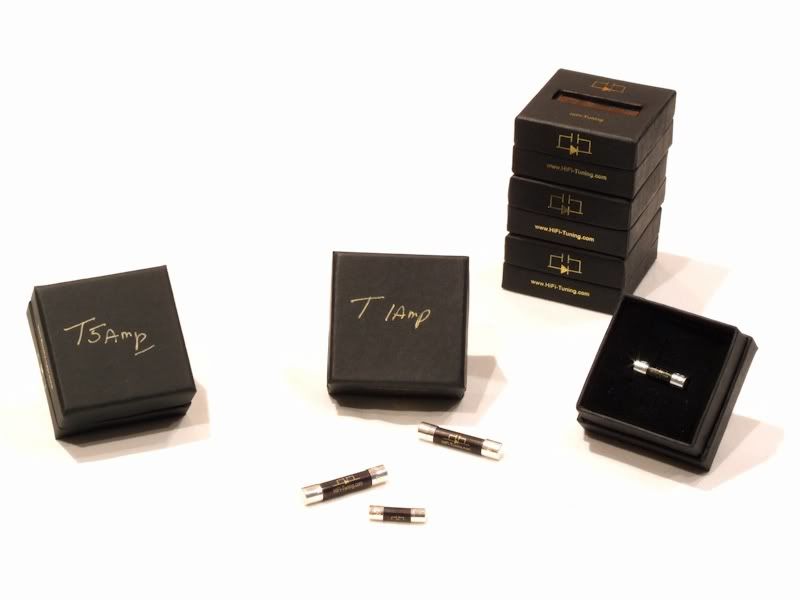
Figure 4. HiFi Tuning Supreme fuses.
After the P5 was burned in, the power line fuses on the preamps and SACD player were changed to HiFi Tuning's new Supreme fuses. The P10's fuse was changed at the 80 hour mark. As with the P5, the P10's output total harmonic distortion while idling began fluctuating between 1% and 2% after the HFT fuse was installed. Output THD at idle was a steady 2% prior to the fuse change. Based on other reports from P10 owners who switched to HFT fuses and who also upgraded from the P5, I was not expecting the fuse change to make as big a difference in the P10 as it did in the P5. I thought that the HFT fuse brought a higher degree of improvement in the P10's clarity, detail and image weight than it did in the P5. There was also the additional benefit of an increased sense of layering and holography between images. As with the P5, the sound was best with the arrow pointing in the "wrong" direction (toward, rather than away from, the point at which AC enters the fuse socket).
Burn In Procedure-Pain Before Pleasure
I followed essentially the same protocol as with the P5: a 300 hour burn in period with varying load conditions from 12% to 106%. The 106% load condition came about when I connected my entire two channel system, including both high-biased Parasound Halo JC 1 power amps, to the P10. This was done at the 51 hour mark...just for fun. I expected the P10 to shut down when the second JC 1 was turned on, but it didn't. I let the system play at 90 dB-C for 30 minutes before I took the JC 1's off the P10. With an overload of 106% for 30 minutes, the heat sink temperatures rose to 95 degrees F. The idle temperature with a 110 watt (12%) load is 92 degrees F.
With both JC 1's on the P10, the sound was grainy with diminished dynamics and pace. Putting the left JC 1 back on the wall reduced the load to 56% and the grainy sound shifted to the right. I tried the source components and preamps on the P5 and both JC 1's on the P10. This resulted in a load of 88% on the P10. The grain and constricted dynamics were still there, though not to the degree as when the entire system was running off the P10.
The burn in experience with the P5 had taught me not to expect sweet sound right off the bat. However, I was unprepared for the crushed sound stage that resulted when I replaced the fully burned in P5 with the brand new P10. The sound stage shrank to a five foot wide by two foot high area centered about the top of the equipment cabinet. At the end of Sheila E's "Writes of Passage" CD, there is an outro piece titled "Train Agoin'" that consists of heavy electronic drum beats and the sound of a "choo choo" train that travels from left to right beginning at the left wall (three feet from the left speaker) and just under the top edge of the speaker (five feet up). The train sound moves across the sound stage and fades away at a point seven feet from the edge of the right speaker. I always get a kick out of seeing people's heads follow the train as it moves from far left to far right, with the inevitable question "how does it do that?". The new, un-burned in P10 didn't have the train floating near the top of the speakers. It put the train firmly along the top of the equipment cabinet and confined to the area between the speakers. I experienced a moderate amount of sound stage width reduction with the pre-burned in P5, but no height reduction. The sonic changes throughout the burn in procedure are summarized in table 2.
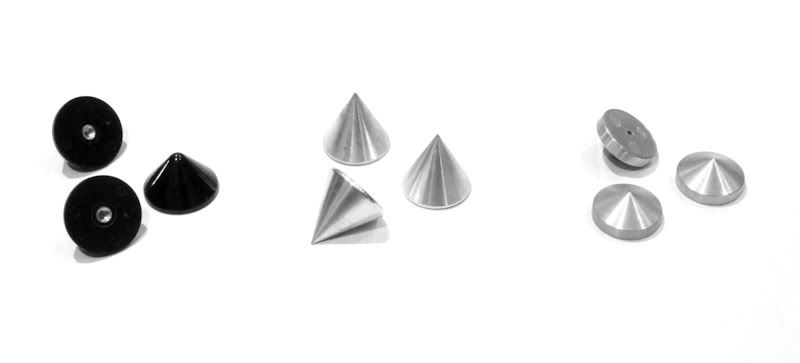
Figure 5. PS Audio recommends the use of isolation devices to reduce mechanical vibration. Left to right: Black Diamond Racing Mark 4 carbon fiber cones, 1.5" aluminum cones, 3/4" aluminum cones.
I use three Black Diamond Racing Mark 4 cones under my turntable and SACD player. Under the P10, the BDR cones increased bass weight but also blurred bass detail. Overall detail was also slightly softened. The small aluminum cones increased bass weight, speed and slam and increased image weight at the sides of the sound stage with no detrimental effects. The large aluminum cones were previously used with the Power Plant Premier AC regenerator. They worked as well as the small cones, but were a little too tall as they only left 1/2" of clearance above the P10.
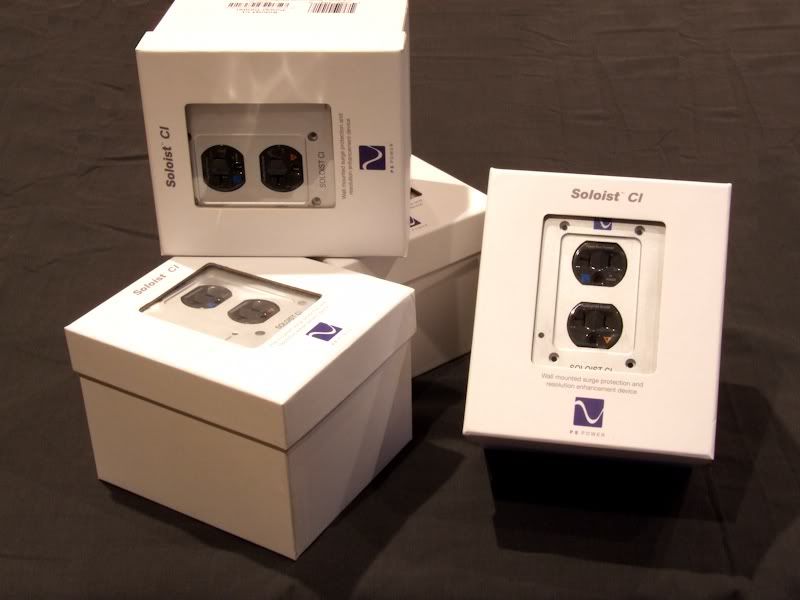
Figure 6. While I was on my power accessory binge, I bought a few Soloist Premier SE in-wall conditioners
on closeout.
Measurements
Sine wave and noise spectrum (Fast Fourier Transform) plots were made with a Tektronix 2012 digital oscilloscope. It is easier to see the differences in the FFT plots if you save them to your computer and view them in succession. These plots are from a fully burned in P5 (over 600 hours of use) and a new P10. The P10 shows a lower amplitude, flatter and less dense noise spectrum.
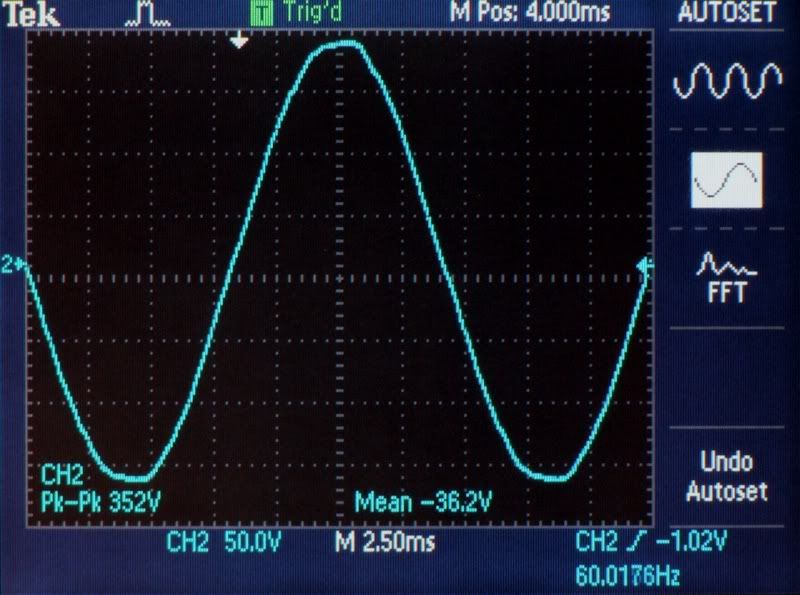
Figure 7. Sine wave plot of AC power signal from end of PS Audio AC-12 power cable connected to a
PS Audio Soloist SE in-wall power conditioner.
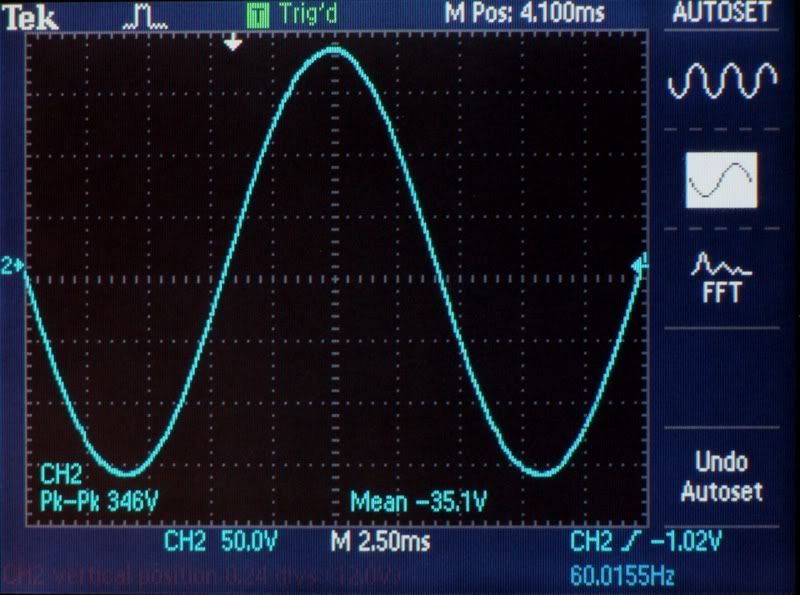
Figure 8. Sine wave plot of AC power signal output of P5 AC regenerator.
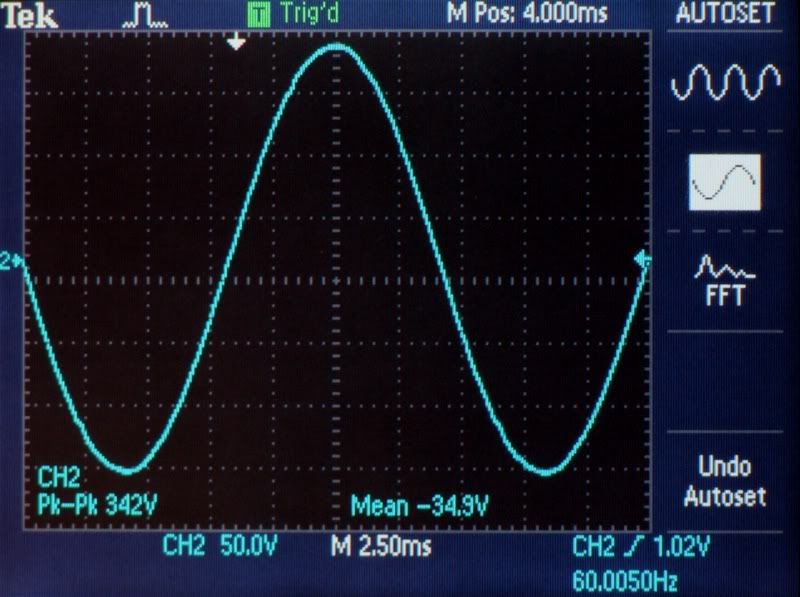
Figure 10. Sine wave plot of AC power signal output of P10 AC regenerator.

Figure 11. FFT plot of AC power signal from end of PS Audio AC-12 power cable connected to a PS Audio
Soloist SE in-wall power conditioner.
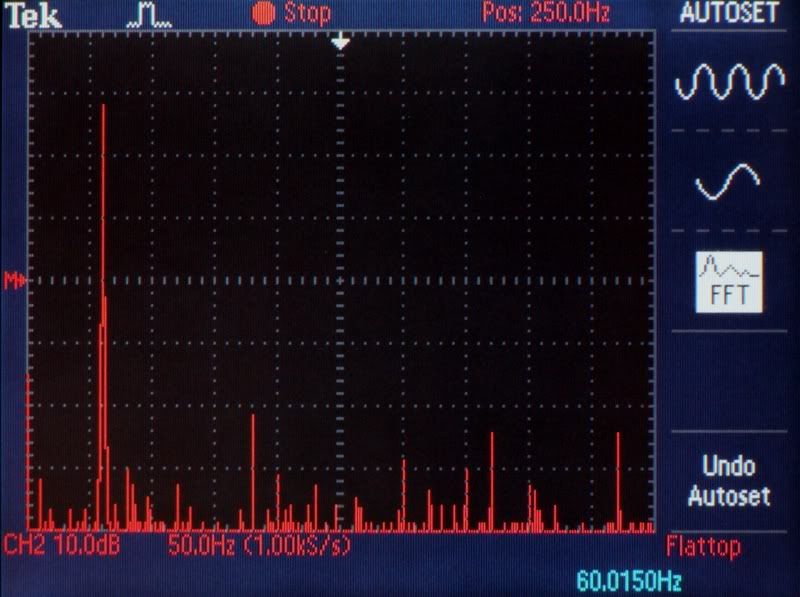
Figure 12. FFT plot of AC power signal output of P5 AC regenerator.
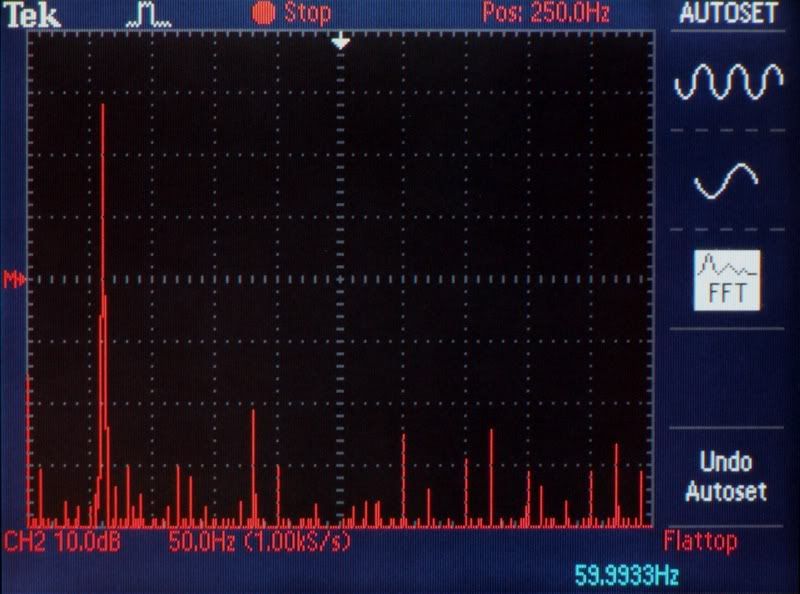
Figure 13. FFT plot of AC power signal output of P10 AC regenerator.
In my two channel system, only the source components and line level and phono preamps are connected to an AC regenerator. Those components only represent a 110 watt load. One might assume that there would not be an audible difference between the P5 and the more powerful P10 AC regenerators since the P5 was only being utilized at 14% of capacity. The P10's extra goodness might be considered as wastefully indulgent overkill. What good would more headroom do on top of the already extravagant amount of headroom provided by the P5?
That might have been a valid question if music signals weren't full of transients that require large amounts of power to reproduce cleanly and accurately. The P10 has 20% more continuous power, 25% more peak power and 40% more peak current than the P5. I am well aware of the benefit of extra power headroom for power amplifiers. I was surprised at the difference that the P10's extra headroom made in the performance of my low power source components and preamps.
Table 1. PerfectWave P5 and PerfectWave P10 Differences



Figure 1. Time's up...Sonny's home.

Figure 2. The P10 is a huge hunk of metal like PS Audio's earlier power plants.

Figure 3. Upgrade Power Port Premier outlets and a changeable fuse! Just two reasons why the P10 makes
Such Good Sound.

Figure 4. HiFi Tuning Supreme fuses.
After the P5 was burned in, the power line fuses on the preamps and SACD player were changed to HiFi Tuning's new Supreme fuses. The P10's fuse was changed at the 80 hour mark. As with the P5, the P10's output total harmonic distortion while idling began fluctuating between 1% and 2% after the HFT fuse was installed. Output THD at idle was a steady 2% prior to the fuse change. Based on other reports from P10 owners who switched to HFT fuses and who also upgraded from the P5, I was not expecting the fuse change to make as big a difference in the P10 as it did in the P5. I thought that the HFT fuse brought a higher degree of improvement in the P10's clarity, detail and image weight than it did in the P5. There was also the additional benefit of an increased sense of layering and holography between images. As with the P5, the sound was best with the arrow pointing in the "wrong" direction (toward, rather than away from, the point at which AC enters the fuse socket).
Burn In Procedure-Pain Before Pleasure
I followed essentially the same protocol as with the P5: a 300 hour burn in period with varying load conditions from 12% to 106%. The 106% load condition came about when I connected my entire two channel system, including both high-biased Parasound Halo JC 1 power amps, to the P10. This was done at the 51 hour mark...just for fun. I expected the P10 to shut down when the second JC 1 was turned on, but it didn't. I let the system play at 90 dB-C for 30 minutes before I took the JC 1's off the P10. With an overload of 106% for 30 minutes, the heat sink temperatures rose to 95 degrees F. The idle temperature with a 110 watt (12%) load is 92 degrees F.
With both JC 1's on the P10, the sound was grainy with diminished dynamics and pace. Putting the left JC 1 back on the wall reduced the load to 56% and the grainy sound shifted to the right. I tried the source components and preamps on the P5 and both JC 1's on the P10. This resulted in a load of 88% on the P10. The grain and constricted dynamics were still there, though not to the degree as when the entire system was running off the P10.
The burn in experience with the P5 had taught me not to expect sweet sound right off the bat. However, I was unprepared for the crushed sound stage that resulted when I replaced the fully burned in P5 with the brand new P10. The sound stage shrank to a five foot wide by two foot high area centered about the top of the equipment cabinet. At the end of Sheila E's "Writes of Passage" CD, there is an outro piece titled "Train Agoin'" that consists of heavy electronic drum beats and the sound of a "choo choo" train that travels from left to right beginning at the left wall (three feet from the left speaker) and just under the top edge of the speaker (five feet up). The train sound moves across the sound stage and fades away at a point seven feet from the edge of the right speaker. I always get a kick out of seeing people's heads follow the train as it moves from far left to far right, with the inevitable question "how does it do that?". The new, un-burned in P10 didn't have the train floating near the top of the speakers. It put the train firmly along the top of the equipment cabinet and confined to the area between the speakers. I experienced a moderate amount of sound stage width reduction with the pre-burned in P5, but no height reduction. The sonic changes throughout the burn in procedure are summarized in table 2.
Table 2. P10 Sonic Changes Throughout Burn In
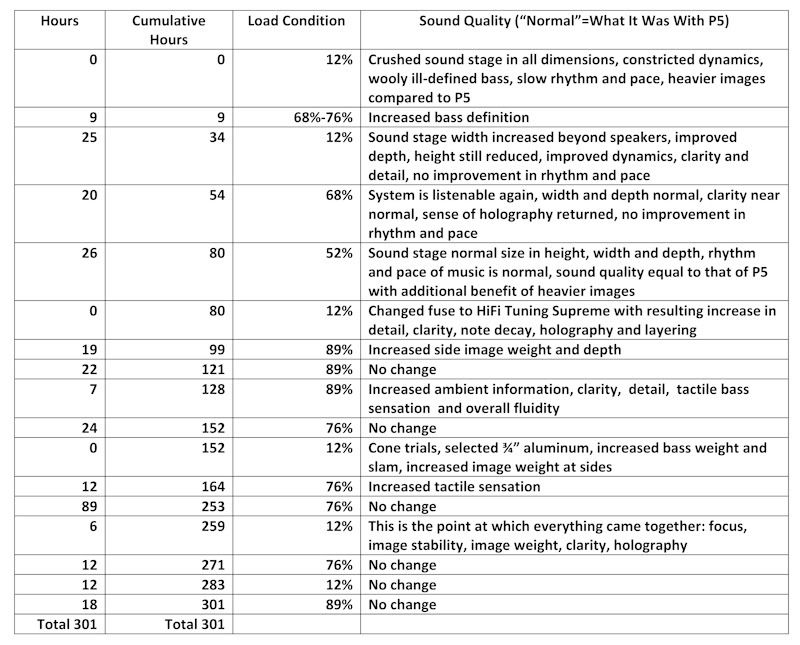


Figure 5. PS Audio recommends the use of isolation devices to reduce mechanical vibration. Left to right: Black Diamond Racing Mark 4 carbon fiber cones, 1.5" aluminum cones, 3/4" aluminum cones.
I use three Black Diamond Racing Mark 4 cones under my turntable and SACD player. Under the P10, the BDR cones increased bass weight but also blurred bass detail. Overall detail was also slightly softened. The small aluminum cones increased bass weight, speed and slam and increased image weight at the sides of the sound stage with no detrimental effects. The large aluminum cones were previously used with the Power Plant Premier AC regenerator. They worked as well as the small cones, but were a little too tall as they only left 1/2" of clearance above the P10.

Figure 6. While I was on my power accessory binge, I bought a few Soloist Premier SE in-wall conditioners
on closeout.
Measurements
Sine wave and noise spectrum (Fast Fourier Transform) plots were made with a Tektronix 2012 digital oscilloscope. It is easier to see the differences in the FFT plots if you save them to your computer and view them in succession. These plots are from a fully burned in P5 (over 600 hours of use) and a new P10. The P10 shows a lower amplitude, flatter and less dense noise spectrum.

Figure 7. Sine wave plot of AC power signal from end of PS Audio AC-12 power cable connected to a
PS Audio Soloist SE in-wall power conditioner.

Figure 8. Sine wave plot of AC power signal output of P5 AC regenerator.

Figure 10. Sine wave plot of AC power signal output of P10 AC regenerator.

Figure 11. FFT plot of AC power signal from end of PS Audio AC-12 power cable connected to a PS Audio
Soloist SE in-wall power conditioner.

Figure 12. FFT plot of AC power signal output of P5 AC regenerator.

Figure 13. FFT plot of AC power signal output of P10 AC regenerator.
Proud and loyal citizen of the Digital Domain and Solid State Country!
Post edited by DarqueKnight on
Comments
-
Questions and Answers
Question 1: Since AC regenerators generate a new power sine wave, why does the manufacturer recommend using better power cords, vibration isolation devices and a passive conditioner between the wall and the regenerator?
Answer: While it is true that AC regenerators create a new power sine wave by filtering and converting the incoming "dirty" power to DC, then converting that DC signal to a near perfect AC signal, the process is not perfect. Some line noise still gets through as seen in the FFT plots above. The cleaner the power signal is before it gets to the regenerator, the cleaner the regenerated power signal.
Question 2: What is the value of power accessories since any well designed audio component will have a power supply capable of filtering all audible power line noise?
Answer: I have evaluated and used three different AC regenerators in my two channel audio system and none of them could completely remove audible noise artifacts from the incoming AC power. If AC regenerators costing $2200, $3000 and $4500 could not completely remove audible noise from the incoming power, what chance does an audio component's power supply have...no matter how well designed it is?
The difference in total harmonic distortion between the Power Plant Premier and the PerfectWave P5 was 0.4% compared to 0.2%. Trained listeners can discern improvements this small. A study done in 1980 by Petri-Larmi et al demonstrated that trained listeners using high quality stereo equipment and high quality recordings were able to discern extremely low levels of transient intermodulation distortion. The audibility threshold in that report was 0.003%. The citation is "Psychoacoustic Detection Threshold of Transient Intermodulation Distortion, by M. Petri-Larmi, M. Otala and J. Lammasniemi. It was published in the March 1980 issue of the Journal of the Audio Engineering Society. This is the abstract:
"The audible threshold of transient intermodulation distortion (TIM) was determined for the six most sensitive subjects of the previously reported test series of 68 listeners. Improved equipment, carefully controlled listening environment, a digital TIM generator, and five recorded stereophonic music samples were used. The results show that in certain types of passages of music, a trained and sensitive listener can reliably detect extremely low values of distortion. Low distortion values were perceived only as changes in sound character, and not as distortion."
Question 3: What good can a few feet of high priced power cable do at the end of miles and miles of "cheap" power line wire and "cheap" house wiring?
Answer: The same good that a few inches of high priced water filter can do at the ends of miles of "cheap" piping from the municipal water supply. The purpose of good power cables and other power quality accessories is the removal of power line noise. The simple act of twisting cable pairs in a specific geometry can have noise cancellation effects. Other technologies such as conductors with highly polished surfaces, extensive shielding and ferrite impregnation in the jacket have been shown to have measurable effects on reducing the noise content of power cables.
Figure 14. Two channel system: a work in progress.
Further Study
I was curious to see and hear how the P10 would perform in my home theater system. The system is currently served by two dedicated 20 amp AC circuits and two Power Plant Premier (PPP) AC regerators. One PPP was sufficient. However, I wanted to split the load between two PPP's to provide additional headroom and reduced noise and distortion.
The 60" Kuro plasma TV, three Adcom GFA-5500 power amps, preamp and Blu-ray player represented a total 70% load on the P10. I liked what I heard and saw... which lead to me placing an order for a single P10 to replace both PPP's.
Figure 15. Home theater electronics. The PPP's at the lower left have already been sent to a dealer for trade-in credit on a new P10.
Figure 16. Coming soon to a home theater near me.
References
Studies On Residential Power Line Noise Part 1-Statement SC Power Cord
Studies On Residential Power Line Noise Part 2-Statement SC Power Cord
Studies On Residential Power Line Noise Part 3-PS Audio Power Plant Premier
Studies On Residential Power Line Noise Part 4-PS Audio Premier SC Power Cord
Studies On Residential Power Line Noise Part 5-PS Audio Power Port Premier
Studies On Residential Power Line Noise Part 6-PS Audio Soloist Special Edition
Studies On Residential Power Line Noise Part 7-HiFi Tuning and Isoclean Fuses
Studies On Residential Power Line Noise Part 8-Audio Grade Fuses For Home Theater
Studies On Residential Power Line Noise Part 9-PS Audio P5 AC RegeneratorProud and loyal citizen of the Digital Domain and Solid State Country! -
Thank you so much for great insight.
Do u have any setup advise for the P10.
I have a 400V setup 230v set and THD in 0.8% in and 0.1% out with High Regulation and SineWave.
If I change to Low Distortion the out THD goes up to 0.5% or if I just change to Multiwave it goes up as well to 0.8%?
Have you tried the Shunyata Triton ?
PerS
Norway -
Thank you so much for great insight.
Do u have any setup advise for the P10.
I have a 400V setup 230v set and THD in 0.8% in and 0.1% out with High Regulation and SineWave.
If I change to Low Distortion the out THD goes up to 0.5% or if I just change to Multiwave it goes up as well to 0.8%?
Have you tried the Shunyata Triton ?
PerS
Norway
Hi Pers, welcome to the forum.
I have not tried any of the Shunyata conditioners. Some members of the PS Audio forum have given favorable reviews of other Shunyata power conditioners. You may want to post a question there.
Page 6 of the P10 manual gives some setup advice for choosing either high regulation or low distortion. It depends on what type of equipment you are using, and what sounds best to you.
I am not sure what you mean by this:I have a 400V setup 230v set...
I know that your mains voltage is 230v, I don't understand the 400V part.Proud and loyal citizen of the Digital Domain and Solid State Country! -
I have Meridian DSP8000, DSP7200 and 4xDSP5200HC surrounds, Merdian 861V6 pre, Sooloos and Oppo BD93 Audiocom Signature Edition
In Norway we have 2 kinds of voltage a 400V has only 1 activ and 1 neutral line of 230V.
A 230v has 2 active 230v lines. -
I just placed an order this morning for a Shunyata Triton, Python Ztron 20 amp cable, 3 Cobra Ztron 15 amp cables, and a SR-71 AC outlet. This will give me a complete Shunyata power system for the two-channel gear. Review after it arrives and is installed.Lumin X1 file player, Westminster Labs interconnect cable
Sony XA-5400ES SACD; Pass XP-22 pre; X600.5 amps
Magico S5 MKII Mcast Rose speakers; SPOD spikes
Shunyata Triton v3/Typhon QR on source, Denali 2000 (2) on amps
Shunyata Sigma XLR analog ICs, Sigma speaker cables
Shunyata Sigma HC (2), Sigma Analog, Sigma Digital, Z Anaconda (3) power cables
Mapleshade Samson V.3 four shelf solid maple rack, Micropoint brass footers
Three 20 amp circuits. -
I just placed an order this morning for a Shunyata Triton, Python Ztron 20 amp cable, 3 Cobra Ztron 15 amp cables, and a SR-71 AC outlet. This will give me a complete Shunyata power system for the two-channel gear. Review after it arrives and is installed.
I had the Hydra 8v2 the triton is way better.
I also have Ztron powersnakes on orde 5 Anaconda (1 of them is a 20amp)
Looking forward to your review, please mail me when posted
PerS -
DarqueKnight, do you have any listening or comparative experience with balanced ac power isolators/filters ala Equi-Tech or BPT?
I had a chance to compare a balanced power isolator to a couple of different AC filters and a regenerator on source components.
The difference was not subtle, in all cases I prefered the balanced.
Wondering if you've any input on the subject. -
I don't have any listening experience with balanced power devices. I would be interested in reading your results.Proud and loyal citizen of the Digital Domain and Solid State Country!
-
DarqueKnight,
I presently have a P10 on the way. My next venture will be into power cables. I am curious as to whether you have tried any of the PS Audio AC-* series power cables on the outbound side of the P10 as you did with the PPP.
I purchased a used Soloist off of Audiogon. I figured at less than $100, what have I got to lose? This one soloist made such a dramatic improvement to my source components that I immediately ordered a P10. DOH! -
I have not tried any AC-* series cables on the outbound side of the P10. It's on my list of things to do.
Did you buy the regular Soloist or the Soloist Premier SE? A link to my Soloist SE review is in the reference section in the second post in this thread.Proud and loyal citizen of the Digital Domain and Solid State Country! -
DarqueKnight wrote: »I have not tried any AC-* series cables on the outbound side of the P10. It's on my list of things to do.
Did you buy the regular Soloist or the Soloist Premier SE? A link to my Soloist SE review is in the reference section in the second post in this thread.
It is a regular soloist. The SE versions seem to be impossible to find. You wouldn't happen to be aware of a dealer that still has some in stock? -
I don't know of any dealer stock. They were plentiful a few months ago but the supplies quickly dried up after PSA announced they were being discontinued. Keep an eye on eBay and Audiogon.Proud and loyal citizen of the Digital Domain and Solid State Country!
-
Going from most to least, the degree of improvement by component was:
1. Phono preamp power line fuse.
2. Line level preamp power line fuse.
3. Power amp power line fuse.
4. Power amp rail fuses.
5. SACD power line fuses.
Where would you place the P10 fuse replacement on this list? -
Three.Proud and loyal citizen of the Digital Domain and Solid State Country!
-
DarqueKnight,
Where did you place the aluminum isolation cones under your P10? Also, did you place the cone points facing up or down? -
Two cones just in front of the rear feet. One cone all the way to the front middle. Points were placed down.Proud and loyal citizen of the Digital Domain and Solid State Country!
-
I'll give ya credit DK, you do some of the best reviews I have ever seen, even in trade mags. Appreciate you covering this as well as you have. Very informative, kudos. Don't know where you get the time but I'm glad you do.HT SYSTEM-
Sony 850c 4k
Pioneer elite vhx 21
Sony 4k BRP
SVS SB-2000
Polk Sig. 20's
Polk FX500 surrounds
Cables-
Acoustic zen Satori speaker cables
Acoustic zen Matrix 2 IC's
Wireworld eclipse 7 ic's
Audio metallurgy ga-o digital cable
Kitchen
Sonos zp90
Grant Fidelity tube dac
B&k 1420
lsi 9's -
Within the darkest corners of the Rabbit Hole I have spent many hours but have yet to find any key or cipher as to how a cone can decide whether to couple or de-couple its energy.
RT1 -
I know when Madonna wore cones, my energy was...um...decoupled.:biggrin:HT SYSTEM-
Sony 850c 4k
Pioneer elite vhx 21
Sony 4k BRP
SVS SB-2000
Polk Sig. 20's
Polk FX500 surrounds
Cables-
Acoustic zen Satori speaker cables
Acoustic zen Matrix 2 IC's
Wireworld eclipse 7 ic's
Audio metallurgy ga-o digital cable
Kitchen
Sonos zp90
Grant Fidelity tube dac
B&k 1420
lsi 9's -
Hi Darque Knight, I stumbled across your excellent and comprehensive review of the P10 because I'm having a problem with it (the P10, not your review!). What follows is my experience of the P10 after owning it for a year, which I hope may be useful to prospective buyers, and as you're clearly very well-informed I'm hoping you might have an idea or two about the problem I'm experiencing. I see that this thread is a few months old but with luck you're still hanging around here.
Background in brief: I bought the P10 in September 2011 to deal with the seriously fluctuating quality of my mains input. The results were amazing. My listening experience is no longer at the mercy of the Czech electricity company, and the consistent quality of audio I'm getting is arguably better than it was even at the best times previously. In fact I was so impressed I made a point of writing a gushing eulogy to PS Audio to thank them for an excellent product. So far so good.
Then I started to notice the clicks. For about the first two hours after powering up the system (I have tube amps and can't leave them on all the time) the P10 makes a clearly audible clicking sound at quite frequent but irregular intervals. I have established that it's not thermal expansion, but a switch or relay changing position inside the unit. I've been on to PS Audio and taken various readings on the advice of their techie, and also installed the latest firmware. There is no sudden change in input voltage or incoming THD when the clicks happen, and the load never exceeds 43%. I have tried using different AC power points, turning the display off and of course experimenting with the various settings. All to no avail. Unless there is a fault (and the PS Audio techs don't think there is) the only explanation I can think of is that the unit has to work harder as the tube amps warm up, but it is still very annoying.
In fact it's really bugging me, maybe more than it should do. There are times I want to sit down and listen to some music when I get home from work, and the effect of the clicks on me is a bit like having someone sit behind you at a concert who every now and then noisily opens a cellophane sweet wrapper. You know it's going to happen, but not when, and you start listening out for it.
Some may say it's a small price to pay for the improved sound, but I do resent introducing a non-essential component into my system which costs the price of a decent second hand car, only to find it makes annoying noises! I can honestly say that if I knew that this was to be the trade-off for the admittedly improved sound quality, I'm not sure I would have bought the P10 at all. I realise that things have to go on inside the unit for it to do its job, but the whole issue could have been avoided by using switches which operate more silently.
It's safe to assume that people who are prepared to pay for this sort of equipment are keen listeners and would have noticed something like this too. So I ask if you, Darque Knight, or anyone else on this forum has experienced the same thing and if so, found a cure. Anyone who solves this for me won't have to pay their bar bills for a few months!
Apologies for length. Neil, Prague, CZ. -
Hi Neil,
The clicking is caused by the regenerator's protection circuitry kicking in either due to a malfunction or the P10 seeing something on the power line it does not like (like extreme over voltage or a fault). Reference Paul McGowan's reply at the end of this thread where a P5 owner was experiencing the clicking issue:
http://www.psaudio.com/vanilla/discussion/4068/p5-clicking/p1neilprague wrote: »There is no sudden change in input voltage or incoming THD when the clicks happen, and the load never exceeds 43%.
Voltage spikes (surges) are often momentary events. By the time you go to the P10 to look at the incoming voltage and THD, the surge has disappeared.
The thing you need to check is the outgoing voltage and THD when the clicks happen. Also note if the incoming voltage is much higher than normal. If the incoming and outgoing voltage and incoming and outgoing THD are the same, or if the outgoing THD is higher, then the regenerator circuit has shut down. You should also notice a reduction in sound quality when the clicking is occurring due to the regenerator being shut down.neilprague wrote: »Unless there is a fault (and the PS Audio techs don't think there is) the only explanation I can think of is that the unit has to work harder as the tube amps warm up, but it is still very annoying.
Were the techs you spoke to local to you, or did you speak to techs at PS Audio's Boulder, Colorado headquarters? To my knowledge, there is only one thing that can cause the constant clicking you describe, and that is the protection circuitry. Any PS Audio tech, anywhere, should know this.neilprague wrote: »There are times I want to sit down and listen to some music when I get home from work, and the effect of the clicks on me is a bit like having someone sit behind you at a concert who every now and then noisily opens a cellophane sweet wrapper. You know it's going to happen, but not when, and you start listening out for it.
The P10 should be dead silent in normal operation. It uses convection cooling, so there is no fan to generate noise. I think what might be happening in your case is:
1. The P10 is seeing voltage spikes or some other line condition that causes the protection circuitry to kick in, or
2. There is some defect in the protection circuitry that causes the protection circuitry to be overly sensitive, or
3. Some past fault condition damaged the protection circuitry and it is not functioning properly.
Hope this helps,
RayProud and loyal citizen of the Digital Domain and Solid State Country! -
I'm thinking #3 DK. Most likely because that can happen when he's not even home and wouldn't even know something happened. There's been many times power goes off and on quickly when I'm not home.HT SYSTEM-
Sony 850c 4k
Pioneer elite vhx 21
Sony 4k BRP
SVS SB-2000
Polk Sig. 20's
Polk FX500 surrounds
Cables-
Acoustic zen Satori speaker cables
Acoustic zen Matrix 2 IC's
Wireworld eclipse 7 ic's
Audio metallurgy ga-o digital cable
Kitchen
Sonos zp90
Grant Fidelity tube dac
B&k 1420
lsi 9's -
I'm thinking #3 DK. Most likely because that can happen when he's not even home and wouldn't even know something happened. There's been many times power goes off and on quickly when I'm not home.
The potential for damage is even greater if the electric service is prone to wide variations in voltage under normal operating conditions and a brief outtage occurs. Some really nasty surges can occur when power is restored. Every now and then I will be home when a very brief outtage will occur that is quick enough for alarm clocks and microwave oven clocks not to go into reset mode, but my audio electronics will shut off.
I recall several years ago that I noticed one of my Power Plant Premiers was clicking and the incoming and outgoing THD and voltage was the same. The manual didn't mention this particular circumstance. When I emailed PS Audio, they told me that the PPP had probably seen some line condition that caused it to go into protection mode. The only way I knew that there had been a power outtage during the night was my power amps were off. The outtage didn't last long enough for my clocks to go into reset mode. PS Audio sent instructions on the procedure for resetting the PPP. Incredibly, the resetting procedure was not in the PPP's manual.
One thing I forgot to mention in my reply to Neil is that when the protection circuitry kicks in, the P10 has to be reset using the reset button on the rear of the unit. The procedure for doing this is described in the manual (if the manual for the European model has the same information as the manual for the North American model).Proud and loyal citizen of the Digital Domain and Solid State Country! -
Many thanks for your speedy and detailed replies, which I've just read. It's late here in CZ so I'll digest thoroughly and get back tomorrow. It certainly looks as if help is at hand - thanks!
-
Again thanks for your replies, DK and Tony. I really appreciate your help here.
My correspondence with PS Audio was with their tech Marcus Iezzi, passed on by Paul McGowan, so I have the real deal there.
I actually sat and observed the voltage and THD readings for about 30 minutes on several separate occasions, and so was able to take exact readings when the relay/switch clicked. The clicks were never accompanied by a rise (or drop) in either. Nor, after each click, did the in/out readings ever become identical. There is some fluctuation in incoming voltage, between 230 and 234 V, while output voltage stays within around 0.2 V of the set value. THD in averages 2% while THD out averages 0.1 or 0.2 %. These readings remain constant, irrespective of the clicks. I have not needed to reset the unit, and there is no drop in sound quality caused by the clicks, other than the annoyance they cause.
So I am pretty sure the regenerator is not shutting down. Could the fact that input voltage varies by around 4V have some bearing on this? I've tried setting the output voltage at a value within this range (around 231 or 232V) and also at a value slightly higher (237, 238V) but the clicks persist. Could the unit be stabilising as it adjusts to varying input voltage at the outset, perhaps? This would explain why they stop after a while.
I wouldn't call the clicking constant as described in the thread you linked to, more like every 5 to 10 minutes in the first hour, every 20 minutes (if that) in the second hour, then they almost always stop. They only occur when there is music playing, or sometimes a split second after the disc finishes. Never when the tube amps are off or idle.
I don't suppose there are many (if any) other owners of the P10 in the Czech Republic. I'm wondering if the mains voltage fluctuations here are greater here than in the US, which is why it takes much longer for the unit to stabilise voltages than it would for a user in the US. That's pure speculation though!
Another idea: I have an old tube amp (18 years) which accounts for nearly all of the load. It's a very decent amp but like all tube amps, it takes a fair old while to warm up and reach its best, especially these days as it's probably a little old and tired (like me). I shall shortly be replacing it with a new tube amp and the problem could solve itself. Is there any likelihood of this?
Barring a fault of some sort, the only other explanation that occurs, and it's a bit far-fetched: Could this have anything to do with static electricity? Occasionally the microprocessor on my pre-amp stops working and I have to unplug the amp briefly. Audio Research admit that a build-up of static can cause this, though I never experienced it when I still lived in the UK.
I'll leave it there as I don't want to take up any more of your time. Thanks, Neil -
We have lots of time Neil.....don't sweat it. Static ? Possible.....if your gear or shelving is very dusty, or cables are laying on carpet with wool carpet being horrible for static electricity. Using unshielded cables ? Never hurts to look at the most simple things first and eliminate those possibilities off the bat.HT SYSTEM-
Sony 850c 4k
Pioneer elite vhx 21
Sony 4k BRP
SVS SB-2000
Polk Sig. 20's
Polk FX500 surrounds
Cables-
Acoustic zen Satori speaker cables
Acoustic zen Matrix 2 IC's
Wireworld eclipse 7 ic's
Audio metallurgy ga-o digital cable
Kitchen
Sonos zp90
Grant Fidelity tube dac
B&k 1420
lsi 9's -
Thanks Tony - if anything it could be that dust collects under the power amp. Could static cause something to go on inside the P10?
I'm going to try something else - run a CD with the power amp off and then with the amp on but the speakers disconnected and see if I still get the clicks.
Like the ex-Governor of California, I'll be back! -
neilprague wrote: »I actually sat and observed the voltage and THD readings for about 30 minutes on several separate occasions, and so was able to take exact readings when the relay/switch clicked. The clicks were never accompanied by a rise (or drop) in either. Nor, after each click, did the in/out readings ever become identical. There is some fluctuation in incoming voltage, between 230 and 234 V, while output voltage stays within around 0.2 V of the set value. THD in averages 2% while THD out averages 0.1 or 0.2 %. These readings remain constant, irrespective of the clicks. I have not needed to reset the unit, and there is no drop in sound quality caused by the clicks, other than the annoyance they cause.neilprague wrote: »So I am pretty sure the regenerator is not shutting down.
Thanks for the clarifications. I agree that the regenerator is not shutting down. It seems to be going into protection mode momentarily after being stressed by the amp.neilprague wrote: »Could the fact that input voltage varies by around 4V have some bearing on this?neilprague wrote: »Another idea: I have an old tube amp (18 years) which accounts for nearly all of the load. It's a very decent amp but like all tube amps, it takes a fair old while to warm up and reach its best, especially these days as it's probably a little old and tired (like me). I shall shortly be replacing it with a new tube amp and the problem could solve itself. Is there any likelihood of this?
I think the culprit is more likely to be your amp stressing the regenerator on demanding music passages.neilprague wrote: »I wouldn't call the clicking constant as described in the thread you linked to, more like every 5 to 10 minutes in the first hour, every 20 minutes (if that) in the second hour, then they almost always stop. They only occur when there is music playing, or sometimes a split second after the disc finishes. Never when the tube amps are off or idle.
Do you know the peak current capacity of your P10? I know the North American version has a peak current capacity of 70 amps. I don't know what it is for the European version.
Do you know the peak current capacity of your amp? During demanding music passages, the amp could be momentarily stressing the regenerator and causing the protection circuitry to activate.
Two things you can try:
1. Play some bass heavy music at your normal listening level and see if the clicking occurs.
2. If you have, or can borrow, another amp, play the same bass heavy music with a different amp and see if the clicking occurs.neilprague wrote: »Barring a fault of some sort, the only other explanation that occurs, and it's a bit far-fetched: Could this have anything to do with static electricity? Occasionally the microprocessor on my pre-amp stops working and I have to unplug the amp briefly. Audio Research admit that a build-up of static can cause this, though I never experienced it when I still lived in the UK.
Since the problem only occurs during or shortly after playing music, I think the amp is stressing the regenerator with peak current demands.Proud and loyal citizen of the Digital Domain and Solid State Country! -
Thanks, DK. I can't find the peak current figures offhand though apparently peak wattage for the P10 is 1750W and 900W for the amp. I can see your reasoning here, though I've checked the load level when playing the end of Mahler 8 at a volume which could get me evicted from the neighbourhood, and the load never gets above 43 or possibly 44%. Most the time the clicks occur when I'm playing a Mozart concerto pretty quietly.
As it happens, the unit has forced the situation. After my last post, the touch screen stopped responding in some areas with the output voltage setting stuck at 240V. No amount of coercion would change this and the final result was that a crack appeared in the screen, though I didn't push it hard. Whether this is related or not I don't know (I don't think so) but it's going to have to go in for repair. Either that, or my UK dealer who's shipping the new tube amp out to me has offered to take the P10 off my hands in part exchange. I'm going to be doing some serious listening over the next few days/weeks and if I find I don't miss the P10 all that much or at all (I won't miss the clicks, that's for sure!) then I'll take the second option. In all honesty the noises it makes have bugged me plenty since May and unless I experience a massive drop in consistency/quality of sound, I won't be too sorry to see it go.
I very much appreciate the trouble you've taken and I feel rather bad that your efforts may well be in vain. It is good to know that there are people out there who are good-hearted enough to give up their time to help with these things. If you're interested I'll let you know what I decide to do about the P10, but I'm sure you've had more than enough of me already.
All the best and again, many thanks.
Neil -
neilprague wrote: »Thanks, DK. I can't find the peak current figures offhand though apparently peak wattage for the P10 is 1750W and 900W for the amp. I can see your reasoning here, though I've checked the load level when playing the end of Mahler 8 at a volume which could get me evicted from the neighbourhood, and the load never gets above 43 or possibly 44%. Most the time the clicks occur when I'm playing a Mozart concerto pretty quietly.
The load meter does not react fast enough to register musical transients, which can demand large amounts of current and which last only thousandths of a second. Such transients can occur very frequently in music, particularly if the recording is very dynamic.
You really need to find out the peak current capacity of your amp and the European version P10. For example, my Parasound Halo JC 1 monoblock amps are capable of 135 amps peak current. This is almost double the 70 amp capacity of the P10. Some amplifiers, like the JC 1, simply can't be run off the P10. I have two Adcom GFA-5500 amps running off a single P10 in my home theater system and it handles them fine.neilprague wrote: »I very much appreciate the trouble you've taken and I feel rather bad that your efforts may well be in vain. It is good to know that there are people out there who are good-hearted enough to give up their time to help with these things. If you're interested I'll let you know what I decide to do about the P10, but I'm sure you've had more than enough of me already.
It's no bother, really. I would like to know what you find out about your P10. It would be helpful information. You never know when someone else will experience the same issue(s). I hope this is quickly resolved for you.Proud and loyal citizen of the Digital Domain and Solid State Country!


